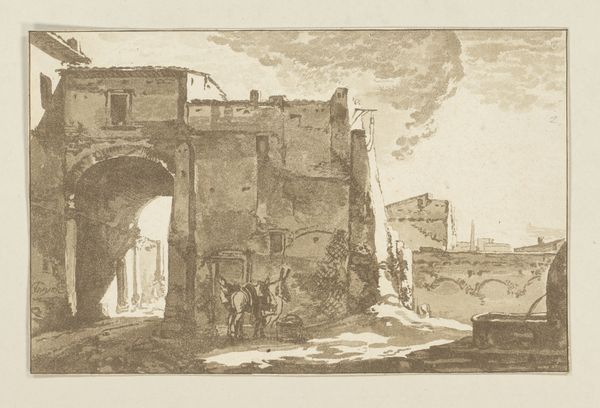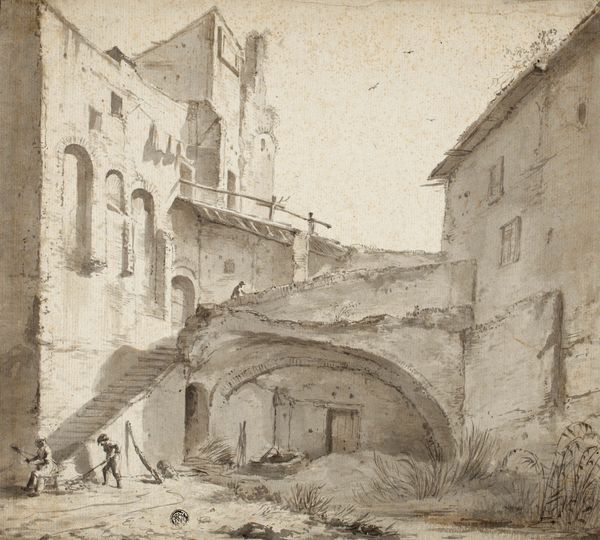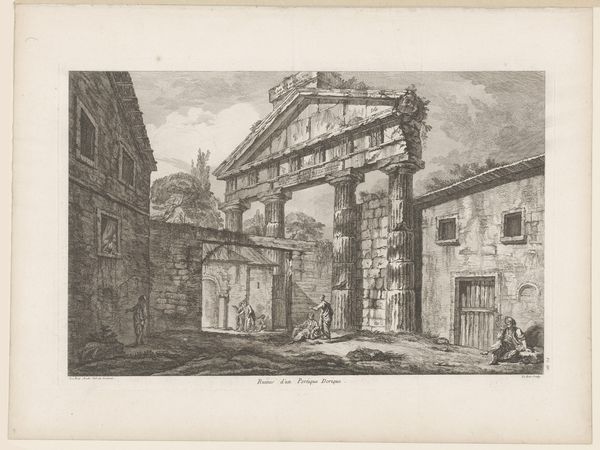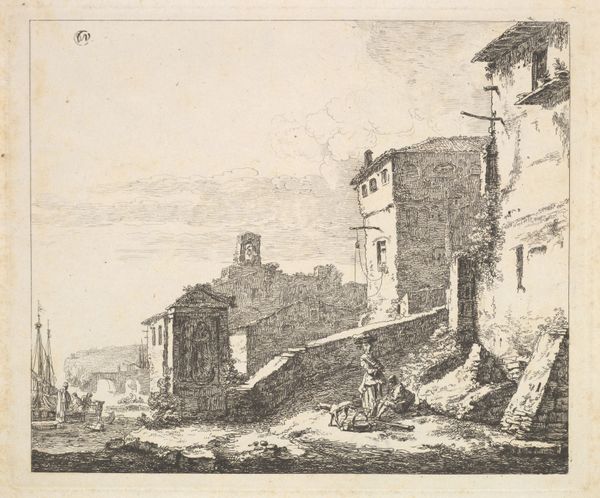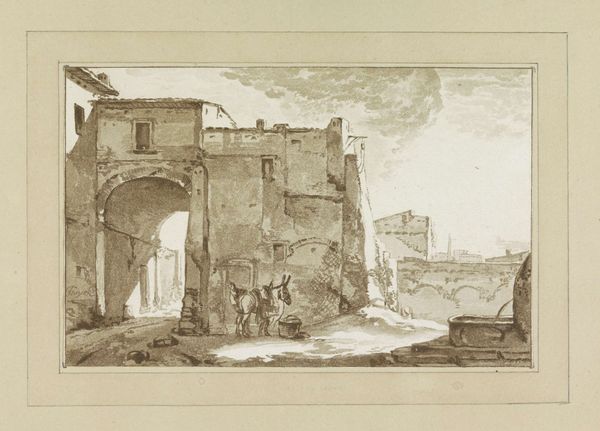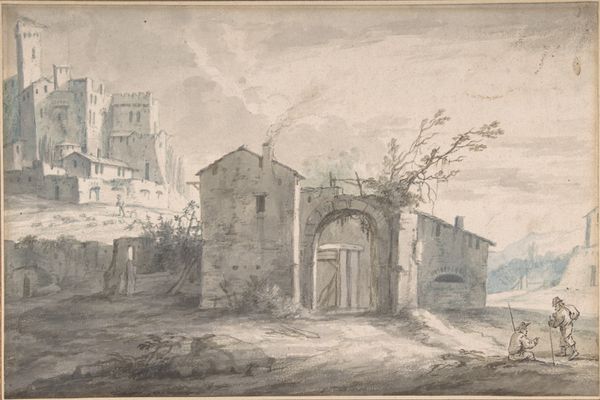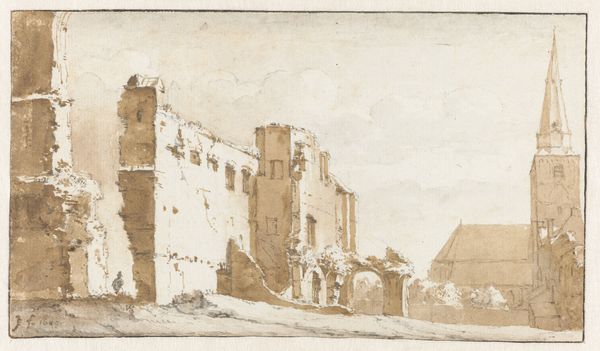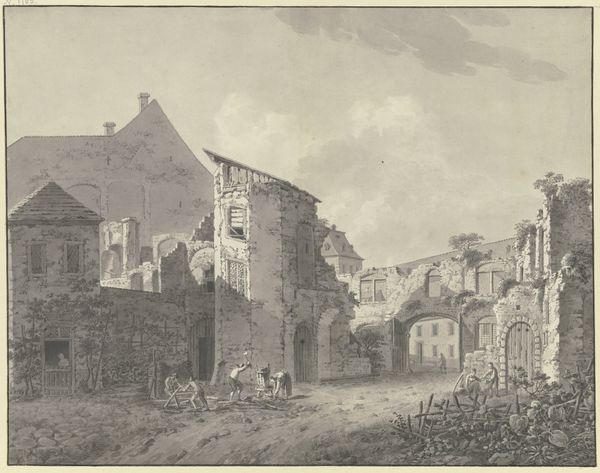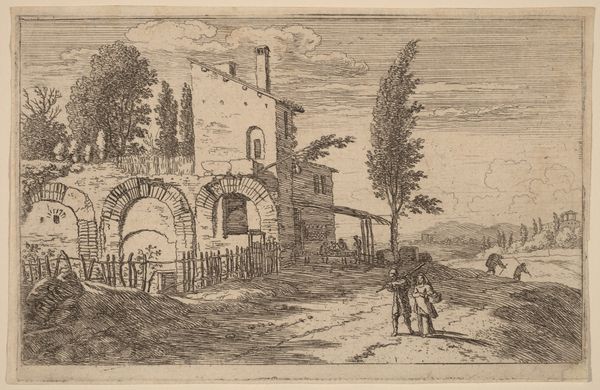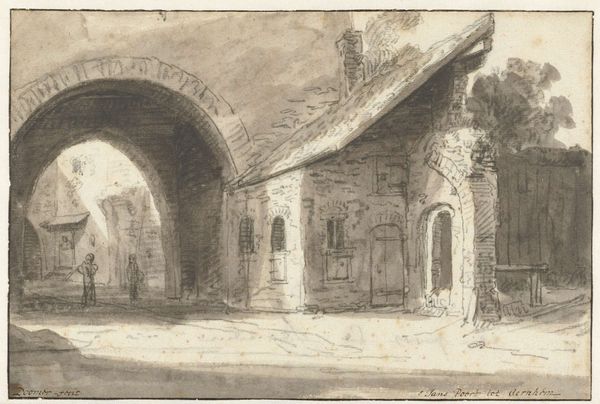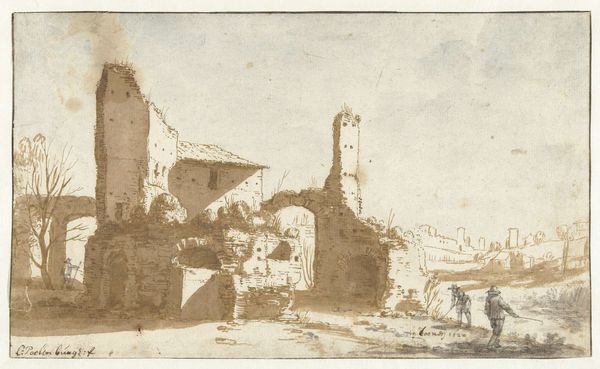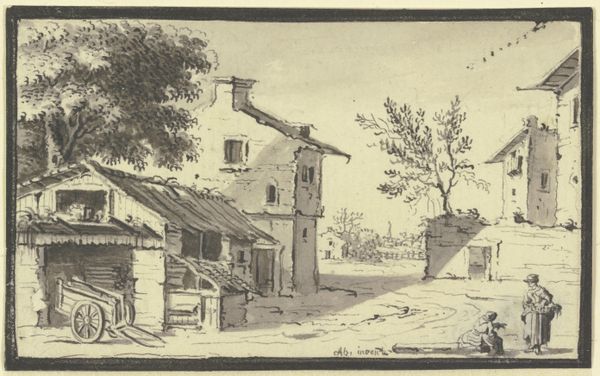
drawing, paper, ink
#
drawing
#
baroque
#
landscape
#
paper
#
ink
#
genre-painting
Dimensions: height 201 mm, width 293 mm
Copyright: Rijks Museum: Open Domain
Curator: This drawing, titled "Huis met een ezel bij een drinkbak," or "House with a Donkey at a Drinking Trough" in English, comes to us from Willem Schellinks, and was likely created sometime between 1637 and 1678. It employs ink on paper, offering a genre-style landscape view. Editor: It's evocative, almost haunting. The subdued palette contributes to this mood. There is also a visual story unfolding. The way Schellinks renders the buildings suggests decay. Curator: Schellinks was a known landscape artist, and it's interesting to see how he captured what is presumably an everyday scene with such attention to detail and light. Think about the availability and cost of paper, ink, and drawing talent. What class of person had the resources to command such a piece? What sort of statement might the patron be hoping to make about himself by requesting it? Editor: Considering that the donkey is centrally placed, almost in the focal point, I am drawn to the role of animals in the socio-economic context of the 17th century. The animal, not as pet, but as labourer. It's quite grounding amidst the delicate technique. Also, note the water. What might it symbolize, in relation to the work the donkey provides for this household? Curator: Water is central to human life. This is also indicated by the house with a hole at the rooftop. We can observe a kind of vulnerability in everyday rural life that I believe is honest on Schellinks' part. We see here the raw materials: the house, the water, and the ink itself as it delineates and binds the world on display. It provides us an unidealized view. Editor: Absolutely. And this approach invites consideration on how the notion of the pastoral evolves. Genre paintings like this provide invaluable records, prompting discussions on class, labour, and gender roles embedded within these seemingly simple representations. Curator: These reflections show just how much we can still find relevant in pieces such as this one from Schellinks. Editor: It makes one consider the power of what we call a “simple drawing” to spur very relevant socio-historical discussions.
Comments
No comments
Be the first to comment and join the conversation on the ultimate creative platform.
